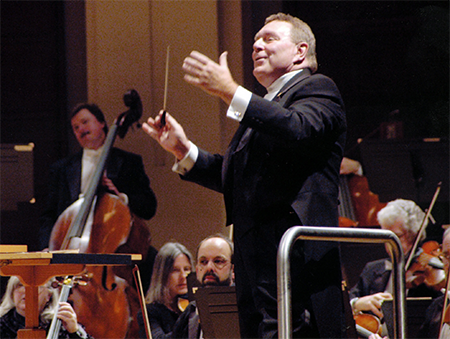As a whole, Mozart’s Requiem is a grandiose work, sublime in its evocation of salvation and eternal rest, and fearsome in its visions of the Last Judgment. The grand forces that meet the eye — four soloists, chorus, and orchestra — suggest drama and spectacle, even if the scoring is dark: the lighter hues of flutes and oboes are omitted in favor of basset horns (cousins of the clarinet), bassoons, a choir of trombones, and strings in their lower registers. Even trumpets and timpani are used less for their ceremonial qualities than as emulsifiers of the texture.
Zimmermann Remembered (Sept. 10)
by Kevin McLaughlin

Former conducting students and colleagues took turns at the podium, and soloists whose careers Zimmermann had touched also took part in a program of works by Mahler, Brahms, Mozart, and Tchaikovsky, among others.
Possibly the most shining example of Zimmermann’s legacy is the orchestra that he developed and led for 43 years. In an age of peripatetic conductors and short-lived musical directorships, the Canton Symphony Orchestra, an ensemble of ninety mostly young professionals, has remained remarkably excellent and intact over the years.


